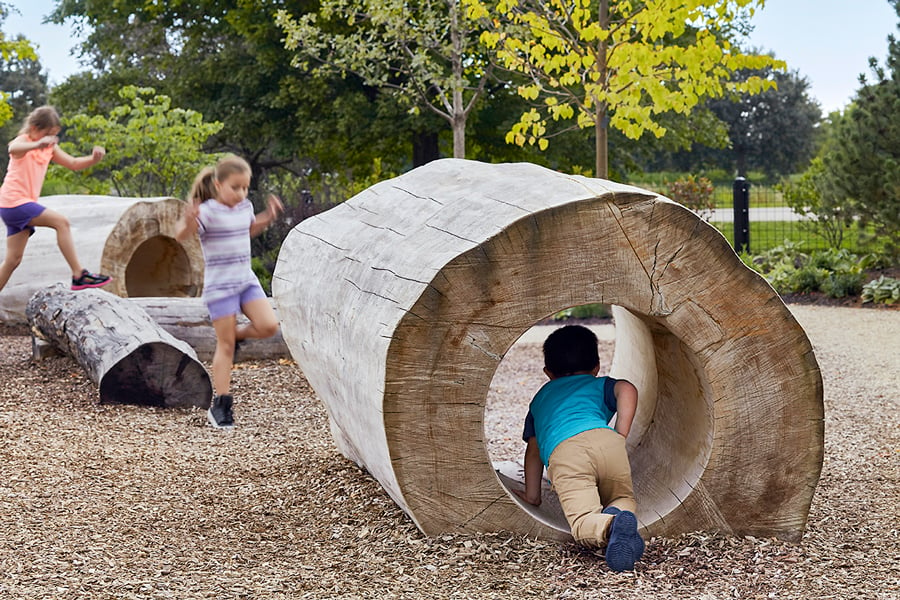
June 12, 2019
At the Chicago Botanic Garden, a New Space Helps Kids Deeply Engage With Nature
The Regenstein Learning Campus encourages children’s sensory discovery of the natural world—minus the gaudiness of plastic playgrounds.

At the new Chicago Botanic Garden (CBG) Regenstein Learning Campus, the landscape encourages children’s sensory discovery of the natural world—minus the gaudiness of plastic playgrounds or an overprescription of experiences. In lieu of sandboxes and jungle gyms, Mikyoung Kim Design elegantly weaves a narrative of outdoor exploration that entices kids to encounter nature through imaginative free play, instilling body confidence. The space, executed by local landscape architects Jacobs/Ryan Associates, is quite different from the CBG’s main, preexisting campus—a vast landscape of manicured gardens that, while a feast for the eyes, aren’t particularly conducive to the effervescent energy of its younger visitors.
“We were interested in the role of the natural world in our everyday lives and how we encourage creative engagements,” says Mikyoung Kim, founder and design director of the namesake Boston-based firm. “How do we encourage people to feel like they can reach in and smell and touch and hear?” Upon entering the learning campus, guests are invited to remove their shoes. Then a multitude of interactive components unfold, simulating what one might find in a natural outdoor experience: A runnel mimics a stream that cools one’s feet; a cluster of grassy mounds is well suited to rolling, tumbling, and storytelling; a series of passageways made from willow branches replicates the experience of walking through a thick tree canopy; strewn hollow logs can be climbed on or scrambled in. At their core, all of these elements provide foundational experiences of interacting with the natural world.
Kim, who scooped up a 2018 National Design Award for Landscape Architecture from the Cooper Hewitt, focuses on environments that enhance well-being, she says, describing an ethos that also drove the Learning Campus’s concept. For Kim, attention to kids’ well-being means moving beyond the padded, protective playground model and toward more challenging design that imparts dignity and confidence to visitors of all backgrounds and abilities, a notion the CBG calls “the dignity of risk,” she explains. “There was this whole idea that education and understanding limits are part of learning not only your place in the world but how you take care of yourself.”
Creating a space that provides outdoor fixtures with inherent flexibility for diverse imaginations and programming, Kim hopes, will enable kids to experience more open-ended exploration: “Your imagination engages the garden differently each time you come.”
You may also enjoy “New Orleans Museum of Art Unveils 6.5-Acre Sculpture Garden Expansion.”
Would you like to comment on this article? Send your thoughts to: [email protected]












